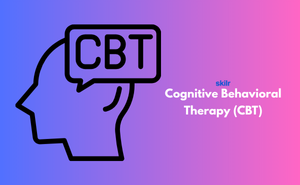👇 CELEBRATE CLOUD COMPUTING DAY 👇
00
HOURS
00
MINUTES
00
SECONDS

Cognitive Behavioral Therapy (CBT) is a form of psychotherapy that focuses on identifying and changing negative thought patterns and behaviors that contribute to emotional distress and psychological issues. CBT helps individuals develop healthier thinking patterns and coping strategies to manage their problems more effectively. It is structured, goal-oriented, and often involves homework assignments to practice skills learned during therapy sessions.
Why is Cognitive Behavioral Therapy (CBT) important?
Who should take the Cognitive Behavioral Therapy (CBT) Exam?
Cognitive Behavioral Therapy (CBT) Certification Course Outline
Introduction to Cognitive Behavioral Therapy
Foundations of CBT
CBT Techniques and Interventions
Assessment and Diagnosis
Treatment Planning
Therapeutic Relationship
Specific Populations and CBT
Ethical and Legal Issues
Advanced CBT Techniques
Crisis Intervention
Outcome Evaluation
Credentials that reinforce your career growth and employability.
Start learning immediately with digital materials, no delays.
Practice until you're fully confident, at no additional charge.
Study anytime, anywhere, on laptop, tablet, or smartphone.
Courses and practice exams developed by qualified professionals.
Support available round the clock whenever you need help.
Easy-to-follow content with practice exams and assessments.
Join a global community of professionals advancing their skills.
(Based on 289 reviews)
To improve your performance, review the key principles of CBT, including cognitive restructuring and behavioral activation. Familiarize yourself with how CBT is applied to different mental health conditions like anxiety and depression. Studying ethical practices in therapy will also be helpful.
Yes. Upon successfully completing the exam, you will receive a certificate demonstrating your knowledge of CBT and its applications in treating mental health conditions.
The exam will typically take about 45 minutes to 1 hour to complete, depending on your familiarity with the topics.
Yes, this exam is useful for both beginners and experienced practitioners. It provides an opportunity to refresh your knowledge, apply CBT techniques effectively, and stay up-to-date with current CBT practices.
Yes, this exam is designed to help you prepare for CBT certifications and deepen your understanding of how to apply CBT in real-world settings.
The exam covers CBT techniques such as cognitive restructuring, behavioral activation, mindfulness, and how to use these techniques to treat mental health conditions like anxiety, depression, and PTSD. It also covers ethical considerations in CBT practice.
No, you only need access to a computer or device with internet access. The exam is focused on theoretical knowledge and does not require any specific software or tools.
This exam tests your knowledge of Cognitive Behavioral Therapy (CBT) principles, techniques, and their application in treating mental health conditions. It covers topics like cognitive restructuring, behavioral activation, and using CBT to treat disorders such as anxiety and depression.
This exam is suitable for psychology students, mental health professionals (therapists, counselors), individuals interested in learning more about CBT, and anyone preparing for CBT certifications or looking to improve their therapeutic skills.
No. While prior knowledge of psychology or therapy techniques can be helpful, this exam is suitable for beginners and provides a strong foundation in CBT principles and practices.